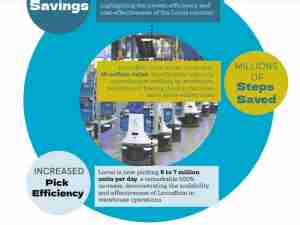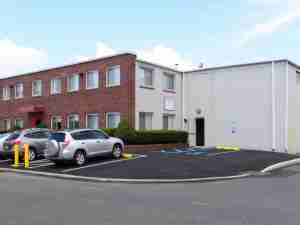The shipping of parcels from one location to another requires the need to accurately assess the amount of capacity required to meet shipping demands.' All cargo has both a scale weight, or gross weight, and a dimensional weight.' By determining dimensions other than, or in addition to gross weight, shippers can pack goods more efficiently and carriers can fill ships, railcars, trucks and airplanes more optimally and profitably.
The need for improvement in assessing dimensional weight is felt most critically in the air cargo market.'
Until recently, determining a parcel's dimensional weight or "Dim Weight," has been a completely manual process.' The traditional method for determining chargeable weight has been limited to using a tape measure to collect dimensions, manually calculating dimensional weight, and then comparing that figure to gross weight.' Manual measurements are time-consuming, inaccurate and slowdown the workflow.' Despite these limitations, manual 'dimming' is still done liberally today in many warehouses.
The most prevalent technical-based solution used for dimming conveyor-driven cargo is laser triangulation.
Laser triangulation, however, is somewhat limited in harsh and busy warehouse environments.' Because triangulation spreads laser energy out along a line, the field of view has to be opened up enough for the system to view the entire line at the same time.' This greatly increases the probability of ambient light entering into the system, causing dimensioning problems, particularly when the laser is coming into contact with highly reflective surfaces.
STATIC DIMMING
D.I.M.M. Tech' (Defined Imaging and Multiple Measurement) is a technical system used for scanning a piece of cargo or multiple pieces of cargo, and obtaining a unique defined image, or digital signature.' In essence, it is a three-dimensional laser imaging system used for measuring the static dimensional weight, 'static dimming,' of freight on a skid.' Static dimming refers to packages that do not get processed on a conveyor system.' It very accurately defines the dimensions of boxes that are to be loaded into a cargo hold to maximize the efficient use of space, enabling unprecedented 3D mapping of the size, dimensions, geometry and spatial relationship of the cargo.
Multiple packages can be dimmed with a single scan, and D.I.M.M. Tech will generate individual sets of measurements for each package.' A typical configuration will allow for up to four packages to be placed in the scanning area, and with one scan the system will provide four distinct sets of length, width, height and dimensional weight.' The software associates all scans with an air waybill, tallying the total dimensional weight for the shipment regardless of whether it is a one-lot or a 72-lot shipment.' It allows for static dimming of all cargo without interrupting the flow of throughput.
D.I.M.M. Tech was developed by FreightScan (740 Lomas Santa Fe, Suite 210, Solana Beach, CA 92075), which provides technology solutions for the freight and logistics industry, and released under the product name FreightScan FS100.' FreightScan collaborated with Lincoln Laser Company (234 East Mohave, Phoenix, AZ 85004) to refine the laser end of the D.I.M.M. Tech and provide turnkey system manufacturing.
FreightScan initially designed the system; Lincoln Laser was then brought in to take the system from its working prototype state into a technically precise unit, and to productize the system so it could be manufactured for mass production.
'FreightScan came to us in the very early stages of the project development,' says Glenn Stutz, Vice President and Chief Operating Officer of Lincoln Laser.' 'We helped them fully develop their breadboard into a final working system.' For example, we redesigned the optical system, boosting its signal output by 400%.' Our aim was to help FreightScan engineer the product so it would function at optimum performance and be ready for manufacturing.'
The FreightScan FS100 scans loos









